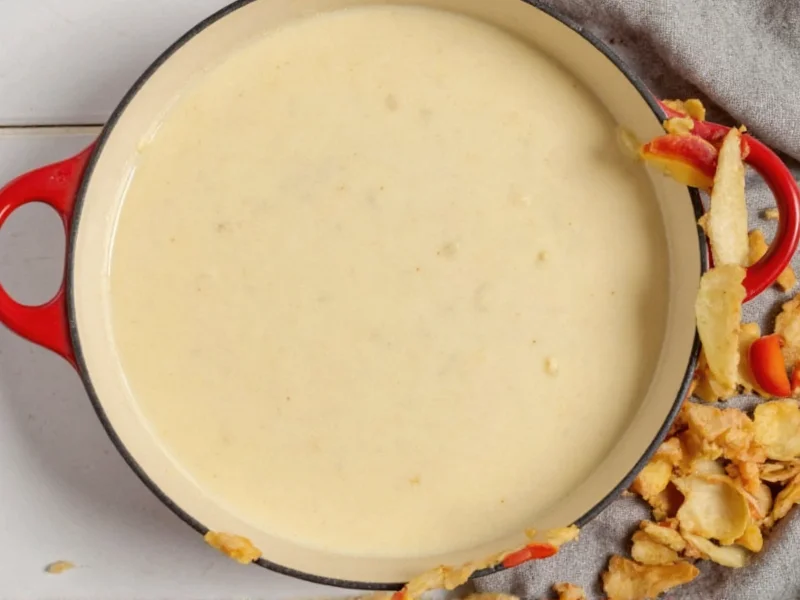Creating a rich, velvety cream of chicken soup from scratch transforms a simple comfort food into something extraordinary. Unlike canned versions loaded with preservatives, homemade cream of chicken soup offers pure flavor and the satisfaction of knowing exactly what goes into your bowl. Whether you're cooking for a family dinner, meal prepping for the week, or seeking comfort when under the weather, this classic recipe delivers consistent results when prepared with attention to technique.
Essential Ingredients for Perfect Cream of Chicken Soup
Quality ingredients form the foundation of an exceptional homemade cream of chicken soup recipe. While some shortcuts exist, understanding each component's role helps you make informed substitutions without compromising quality.
| Ingredient | Why It Matters | Substitution Options |
|---|---|---|
| Chicken thighs (bone-in) | Provides richer flavor than breast meat due to higher fat content | Boneless thighs or rotisserie chicken (add at end) |
| Butter | Creates the roux base; superior flavor to oil | Ghee or olive oil (affects final flavor profile) |
| All-purpose flour | Thickens the soup properly when cooked into roux | Rice flour (gluten-free) or cornstarch (slurry method) |
| Heavy cream | Creates authentic creamy texture without breaking | Half-and-half (less rich) or coconut milk (dairy-free) |
| Chicken broth | Quality base liquid; homemade preferred | Low-sodium store-bought or vegetable broth |
Step-by-Step Cream of Chicken Soup Preparation
Mastering the classic cream of chicken soup cooking technique requires attention to timing and temperature. Follow these steps for restaurant-quality results:
1. Prepare the Chicken Base (30 minutes)
Place 1.5 pounds bone-in chicken thighs in a pot with 6 cups cold water, 1 chopped onion, 2 chopped carrots, 2 celery stalks, 2 garlic cloves, and 1 teaspoon black peppercorns. Bring to a gentle simmer (not boil) and cook for 25 minutes until chicken reaches 165°F internally. Remove chicken, strain and reserve broth. Shred chicken, discarding bones and skin.
2. Create the Flavor Foundation (10 minutes)
Melt 4 tablespoons butter in a large pot over medium heat. Add 1 diced onion, 2 minced celery stalks, and 1 diced carrot. Sauté until softened but not browned (about 8 minutes). This easy cream of chicken soup from scratch technique builds flavor without overpowering the delicate chicken taste.
3. Make the Roux (5 minutes)
Stir in 1/3 cup all-purpose flour and cook for 2-3 minutes, stirring constantly, until the mixture bubbles but doesn't brown. This cooked flour paste is crucial for proper thickening without raw flour taste—a common mistake in how to make smooth cream of chicken soup attempts.
4. Combine and Simmer (20 minutes)
Gradually whisk in 4 cups reserved chicken broth until smooth. Add shredded chicken and bring to a gentle simmer (do not boil). Cook for 15 minutes to allow flavors to meld. Season with salt, white pepper, and 1/2 teaspoon dried thyme.
5. Finish with Cream (5 minutes)
Reduce heat to low and stir in 1 cup heavy cream. Heat gently to 160°F (do not boil) to prevent curdling. For an ultra-smooth texture, use an immersion blender for 10-15 seconds. This creamy chicken soup without canned soup method creates luxurious texture naturally.
Avoiding Common Cream of Chicken Soup Mistakes
Even experienced cooks encounter issues with how long to cook cream of chicken soup. Understanding these pitfalls ensures perfect results:
- Roux burning: Cook over medium heat, not high, and stir constantly. A dark roux creates unwanted flavor in this delicate soup.
- Lumpy texture: Whisk broth into roux gradually while maintaining consistent temperature. Cold broth hitting hot roux causes clumping.
- Curdled cream: Never boil after adding dairy. Keep temperature below 180°F for smooth results.
- Bland flavor: Underseason at each stage. Chicken needs salt throughout cooking, not just at the end.
- Watery consistency: Simmer uncovered for final 10 minutes if too thin, but don't over-thicken before adding cream.
Variations for Dietary Needs and Preferences
Adapt this best ingredients for cream of chicken soup formula to suit various needs:
Gluten-Free Cream of Chicken Soup
Replace flour with 3 tablespoons cornstarch mixed with 1/4 cup cold broth. Add after vegetables have softened, then proceed with broth. This gluten-free cream of chicken soup option maintains thickness without gluten.
Lighter Version
Substitute half the butter with olive oil, use chicken breast instead of thighs, and replace heavy cream with whole milk. Add 1 tablespoon cream cheese for richness without excess calories—a smart storage tips for homemade cream of chicken soup adaptation for health-conscious cooks.
Herb-Infused Variation
Add 2 sprigs fresh tarragon and 1 bay leaf during simmering. Remove before finishing with cream. This elegant thickening cream of chicken soup properly technique adds sophistication to the classic recipe.
Serving and Storage Guidelines
Proper handling ensures your homemade cream of chicken soup recipe maintains quality:
- Serving temperature: Heat to 160-170°F before serving—hot enough to be comforting but not scalding
- Garnish options: Fresh parsley, chives, cracked pepper, or a drizzle of truffle oil elevate presentation
- Refrigeration: Store in airtight container for up to 4 days; dairy-based soups separate when reheated too many times
- Freezing: Freeze without cream for best results; add fresh cream when reheating frozen base
- Reheating: Warm gently over low heat, stirring frequently. Never microwave dairy soups on high power











 浙公网安备
33010002000092号
浙公网安备
33010002000092号 浙B2-20120091-4
浙B2-20120091-4